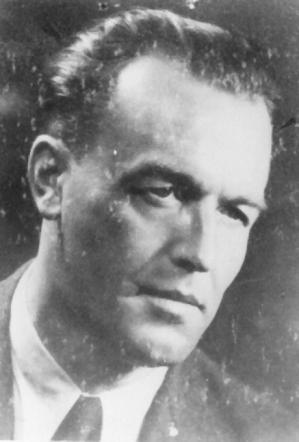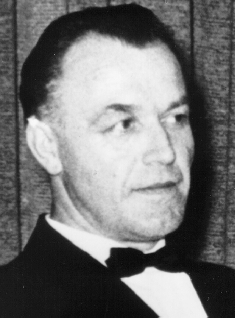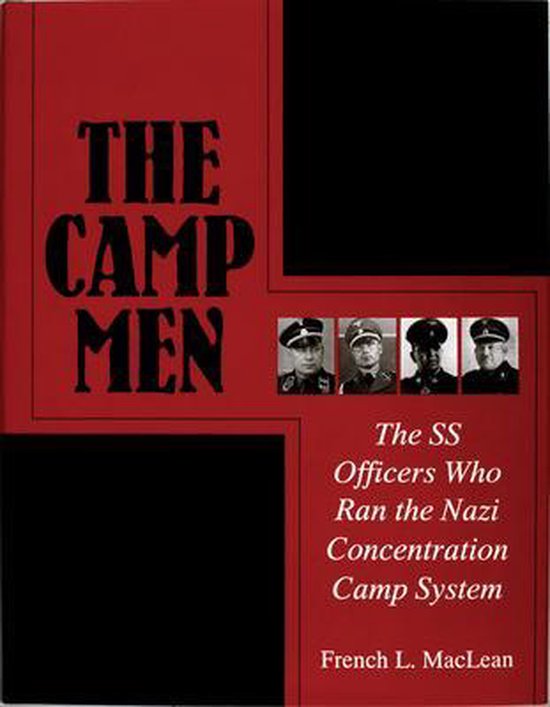Introduction
At the start of the 21st century, Aribert Heim was the most wanted Nazi criminal, second only to Alois Brunner. As physician in concentration camp Mauthausen, he performed gruesome experiments on human guinea pigs. In October 2005, rumors went around he had been traced in Spain but afterwards, there was no trace of him. In 2012, Heim was officially declared dead by German authorities: he allegedly had died in Egypt as early as 1992.
Aribert Heim was born June 28, 1914 in Radkersburg, the son of an inspector of the gendarmerie (police). The Heim family moved to Graz later on. In 1935 Aribert Heim joined the illegal Austrian branch of the N.S.D.A.P. (National Socialist German Workers Party) and the SA (Sturmabteilung). He studied medicine at Graz university. After the Anschluß, the university was "arisiert"(Arianized): professors, assistants and collaborators who did not openly side with the Nazi party were fired and the name was changed to "Adolf Hitler Universität." The faculty of medicine was expanded with a SS medical academy, headed by SS-Obersturmbannführer Hans Käther. In addition to lectures on medical subjects, lessons on military discipline and the Nazi ideology formed part of the curriculum. Thus, the foundation of Heim’s Nazi career was laid during his time as a student.
In 1940, Heim was awarded his MD. In the spring of that year he voluntarily joined the Waffen-SS and was named camp physician in Sachsenhausen. In June 1941, he was transferred to Camp Buchenwald and subsequently to Oranienburg. October 1 of the same year he was transferred again, this time to Mauthausen. The inmates of his camp called him Doctor Death. In the two years he was employed in Mauthausen, he conducted experiments on human guinea pigs no less horrific than those of Joseph Mengele in Auschwitz. Many of his "patients" did not survive their stay in the sick bay.
Definitielijst
- concentration camp
- Closed camp where people are being held captive that are considered to be anti- social, enemies of the state, criminal or unwanted individuals. These groups mostly do not get a fair trial or are condemned to doing time in a camp.
- ideology
- A collection of principles and ideas of a certain system.
- Mauthausen
- Place in Austria where the Nazi’s established a concentration camp from 1938 to 1945.
- Nazi
- Abbreviation of a national socialist.
- Sturmabteilung
- Storm detachment. Semi-military section of the NSDAP. Founded in 1922 to secure meetings and leaders of the NSDAP. Their increasing power was stopped during “The night of the long knives”, 29 and 30 June 1934.
- Waffen-SS
- Name of Military section of the SS.
Images
 Aribert Heim in 1950. Source: http://www.polizei-bw.de.
Aribert Heim in 1950. Source: http://www.polizei-bw.de.Gruesome experiments in Mauthausen
In the book No revenge but justice by Nazi hunter Simon Wiesenthal a few examples are mentioned of the gruesome experiments Heim conducted in Mauthausen. Wiesenthal heard these stories during the time he was imprisoned in this camp himself. It is of course possible that these stories have started to live their own lives and hence do not exactly concur with reality. Although it is impossible to guarantee the historical correctness of these stories, they do mirror the impression the inmates must have had of Doctor Death. We may assume the fear of Heim was very real and that he had earned his nickname not for nothing. It is improbable that these stories are just fiction and even if certain facts are not wholly depicted according to the truth, there must undoubtedly be a nucleus of truth in them.
The first experiment Wiesenthal describes in his book is about the experience of a prisoner who worked for Heim as a surgical assistant. When a transport of prisoners arrived from the Netherlands, Heim selected two young males. He kindly asked them to volunteer for a small, innocent procedure. They were promised they would be released afterwards. Both young men were anaesthetized by Heim and subsequently dissected. That way Heim was able to study the internal organs and saw "for the first time how the stomach of a living person works." After both victims had been dissected, their heads were cut off and the remains burned in the crematory. Their skulls were cooked and preserved as souvenirs. One of the skulls "adorned " Heim’s desk and he probably donated the other to a colleague.
Wiesenthal also describes how a Jewish boy, 12 years of age, was murdered by a lethal injection in his heart. When he was put on the operating table, the boy sensed he was going to be killed. In a prayer, he said goodbye to his parents. After Heim had listened to the prayer attentively, he told the boy in a friendly voice "as if he had to convince a child of a necessary tonsil operation," so Wiesenthal remembers, why the boy should die. Heims explanation was that all Jews had to die because they bore the guilt of all evil in the world and especially of the war.
One of Heim’s guinea pigs was Marcellino Bilbao, at the time 21 years of age. Contrary to Heim’s many other guinea pigs, Bilbao survived his stay in Mauthausen. He tells:
- "Over a period of six weeks, he injected small doses of benzene. He never spoke a word during the treatment, I remember how tall he was, almost six feet. My urine was red, blood flowed from my nose and ears, my body became paralyzed. As Heim left Mauthausen at the end of November, I survived. That is the only reason".
Based on mortality records kept by Heim, Wiesenthal concluded after the war that 540 people had died because of his "treatments". Many Jewish guinea pigs were dissected under anesthesia, like in the examples mentioned above and subsequently killed by lethal injection in the heart. The inoculations with various toxic substances in the heart were intended to discover which poison was the fastest and cheapest way to kill people.
From camp physician to army physician
After his short tenure as camp physician, Heim was transferred to the SS hospital in Vienna. While Heim was murdering people during the period he was employed in concentration camps, now he was employed to save people’s lives as physicians should be doing. Between 1942 and 1945, he served as physician in the SS-Gebirgsjäger-Division Nord and subsequently he was employed in Oulu hospital in Finland. As an army physician he built himself an impeccable track record and thanks to his capability and drive, many soldiers returned from the war alive. His fine reputation as an army physician could not hide the gruesome crimes he committed in Mauthausen though. Probably sensing he would be considered a war criminal, Heim went into hiding in Norway when the end of the war was imminent.
Definitielijst
- Jews
- Middle Eastern people with own religion that lived in Palestine. They distinguished themselves by their strong monotheism and the strict observance of the Law and tradition. During World War 2 the Jewish people were ruthlessly persecuted and annihilated by the German Nazis. . An estimated 6,000,000 Jews were exterminated.
- Mauthausen
- Place in Austria where the Nazi’s established a concentration camp from 1938 to 1945.
- Nazi
- Abbreviation of a national socialist.
Images
 Heim in 1959. Source: http://www.polizei-bw.de.
Heim in 1959. Source: http://www.polizei-bw.de.After the war
On March 15, 1945, Heim was arrested by the Americans as an ‘SS captain and medical officer’ of the 6. SS-Gebirgsjäger-Division Nord. He was imprisoned in a PoW camp in Ludwigsburg and performed forced labor in the Jagstfeld salt mines near Heilbronn between 1947 and 1949. He was released in 1949. Apparently without any trouble he subsequently became assistant surgeon in the civil hospital in Friedberg, Hessen. In 1949 he married a colleague physician. The couple moved to Baden-Baden where he opened a practice in gyneacology. His business flourished and in 1958 he bought 24 rental homes in the Berlin suburb of Tiergarten, netting him some 6,000 Mark a month, according to Wiesenthal.
Heim’s carefree life came to an end in 1962 when a warrant for his arrest was issued, based on the many charges brought against him. On September 14, the police did not find him at home though. A day before the warrant was issued, Heim was tipped off by an unknown source and subsequently he fled. Since then he is fugitive. How he managed to escape and where is not known exactly and numerous rumors about this are circulating. Simon Wiesenthal traced Heim for the first time in the 70s. He discovered that Heim, represented by Heidelberg tax advisor Paul Barth and Frankfurt lawyer Fritz Steinacker – also Joseph Mengele’s lawyer – had been living for years on the income from his rental homes in Berlin. The monthly rent was transferred to him by Heim’s married sister, Hilde Barth. The police vainly tried to get information from her or his other sister as to the whereabouts of their brother. Attempts by Wiesenthal to track Heim down through the tax agency were astutely thwarted by Heim’s lawyer, Fritz Steinacker. In 1979 Wiesenthal brought charges against the lawyer at the Bar Association in Frankfurt and the court, blaming him for obstruction of prosecution. The charge against Steinacker was dismissed however.
On June 13, 1979, a hearing before the deNazification court in Berlin was opened against Heim. Wiesenthal had applied for this trial as early as eight years before. After a number of testimonials had been read and various witnesses had been interrogated personally by the court, the president concluded that Heim was guilty of all crimes he was charged with. It was also concluded, Heim had committed premeditated murder. He was sentenced to a fine of 510,000 Mark. The fine was guaranteed by a mortgage on the homes let out by Heim. According to Wiesenthal, Heim was "cut off from his source of income" since then but his whereabouts were still unknown.
According to the German weekly Der Spiegel, Heim returned to Berlin in 1963 for a short time and subsequently he found employment as a police physician in Egypt. In 1967 he divorced his wife who was still active as a physician in southern Germany. Next he probably fled to Asuncion, the capital of Paraguay. According to Der Spiegel, he probably worked in the neighboring country of Uruguay as a psychiatrist between 1979 and 1983. Two years later, he seemed to have evaded to Spain.
As is the case with other Nazi criminals who fled, it is assumed that Heim had been assisted in his escape after the war by Odessa, a mysterious aid organization for fugitive Nazis; its existence has never been ascertained though. In July 2002 the Simon Wiesenthal Center launched Operation Last Chance, the last chance to track down fugitive Nazi war criminals, including Heim and have them taken to court. In October 2005, Heim was allegedly traced in Spain.
Definitielijst
- deNazification
- Post war policy of the allies in Germany to punish Nazi war criminals and to remove known Nazis from positions of power or public service.
- Nazi
- Abbreviation of a national socialist.
- Odessa
- Organisation of Former SS-members. Secret organization of and for former SS-members. Organised new identities and housing abroad after the war.
- PoW
- Prisoner of War.
The second most wanted Nazi
In 2005 the Spanish paper El Mundo (the world) published the news Heim would have been traced in Spain and would have resided there for the last 20 years. According to the paper, the German police had tracked the Nazi criminal - now 91-year-old - down by tracing money transfers to him. Although various media gave the impression that both the police and the Simon Wiesenthal Center considered it impossible Heim would escape again, he was not found. The Center though does not doubt for a moment that El Banderillo, the nickname he was given by the Spaniards, named after the bull fighter whose task it is to plant spears in a dying bull, is still alive. Stefan Klemm of the Simon Wiesenthal Center states:
- "We have dependable information that Heim is still alive. He owns a fortune of almost a million euros in a bank in Berlin and when he dies, this will be transferred to his heirs. The fact they have not yet laid claim to this fortune is conclusive evidence he is still alive."
Aribert Heim, the second most wanted war criminal after Alois Brunner, remains untraceable up to today. In July 2007 the Austrian press agency APA reported a reward of 50,000 euro was offered for both him and Brunner. Heim is only one of the many war criminals who were granted a new leash on life thanks to negligent authorities and organizations like Odessa.
Murdered?
In his book "Ni oubli ni pardon (Neither forgiven nor forgotten) by Israeli Danny Braz, published in 2007, he claims Heim has been murdered at the end of 1982 by a team of Nazi hunters of which Braz himself was a member. The murder would allegedly have been committed on Santa Catalina, an island off the coast of California. According to Braz, the team subsequently kept silent about the crime. According to him, the family did likewise so Heim’s pension and other income would not be suspended. The Simon Wiesenthal Center calls it "pure fantasy" though that the Nazi physician would have been murdered in 1982. Dr. Efraim Zuroff, manager of the Simon Wiesenthal Center states: "There is ample evidence showing clearly that Doctor Heim was alive after he had allegedly been executed. In fact there are even leads he is still alive and therefore the search for his whereabouts continues." A reward is offered for Information leading to Heim’s arrest and prosecution of 310,000 euro; 130,000 put up by both the Simon Wiesenthal Center and the German authorities and 50,000 by the Austrian authorities.
The hunt continues
In July 2008, the press reported that the Simon Wiesenthal Center was looking for Heim in South-America: "They have strong leads he is somewhere in southern Chili or Argentina. The fact that possessions in his name, including an inheritance of 1,2 million euros, have not yet been claimed by his children is, according to them, a strong lead he is still alive. In their search, they were thwarted by a German judge, as the manager of the center claims. For instance, phone calls by his former wife may not be tapped. The charge is vehemently denied by the court in Baden-Baden. The judge would only see to it that the methods of research are legal, regardless of the seriousness of the crimes."
Demise
On February 4, 2009 the German TV station ZDF and the American paper The New York Times reported that according to their research, Aribert Heim had died as early as 1992 of intestinal cancer. They based their conclusion on hundreds of documents, including a copy of his passport, bank drafts, personal letters and medical records. He would have been in hiding in Cairo where he converted to the Islam. He went through life as Tarek Farid Hussein. The results of this investigation are confirmed by Heim’s son. The Simon Wiesenthal Center though is not yet convinced. "There is no grave, no corpse and no trace of DNA," so spokesman Efraim Zuroff states. According to ZDF, Heim has been buried in a cemetery for the poor that is cleared after a few years; so chances are slim any physical remains will still be found. Nonetheless, German authorities will soon dispatch detectives to Egypt to look for clues.
On September 21, 2012, the news was published that the Landesgericht (state court) Baden-Baden had declared Aribert Heim officially dead. The court considers it proven that Heim had passed away in Egypt in 1992.
Definitielijst
- Nazi
- Abbreviation of a national socialist.
- Odessa
- Organisation of Former SS-members. Secret organization of and for former SS-members. Organised new identities and housing abroad after the war.
Information
- Article by:
- Kevin Prenger
- Translated by:
- Arnold Palthe
- Published on:
- 19-01-2025
- Feedback?
- Send it!
Related books
Sources
- MACLEAN, F., The Camp Men, Schiffer Military History, Atglen (USA), 1999.
- WIESENTHAL, S., Geen wraak maar gerechtigheid, Haarlem, 1988.
- 'Beul van Mauthausen al 25 jaar dood' - Planet.nl
- 'Dokter Dood' op het spoor - Telegraaf
- Duitse rechter 'blokkeert zoeken naar Dr. Death' - Nu.nl
- Duitse speurders zoeken lijk nazibeul Heim - AD.nl
- 'Nazi-arts Aribert Heim leeft nog' - DePers.nl
- 'Nazibeul Aribert Heim stierf in 1992' - Telegraaf
- Nazi "Doctor Death" hid in Spain - Reuters
- Nazi "Doctor Death" in Spain since 1985 - EiTB
- Nazi hunters close in at last on the torturer they call El Banderillo - Times Online
- Oostenrijk: prijs op hoofd nazi's - NOS
- Op zoek naar 'Dokter Dood' - AD.nl
- Simon Wiesenthal Center
- Spanish police hunt Austrian Nazi - BBC News
- Topnazi Aribert Heim officieel dood - NOS
- Wikipedia - Engels




